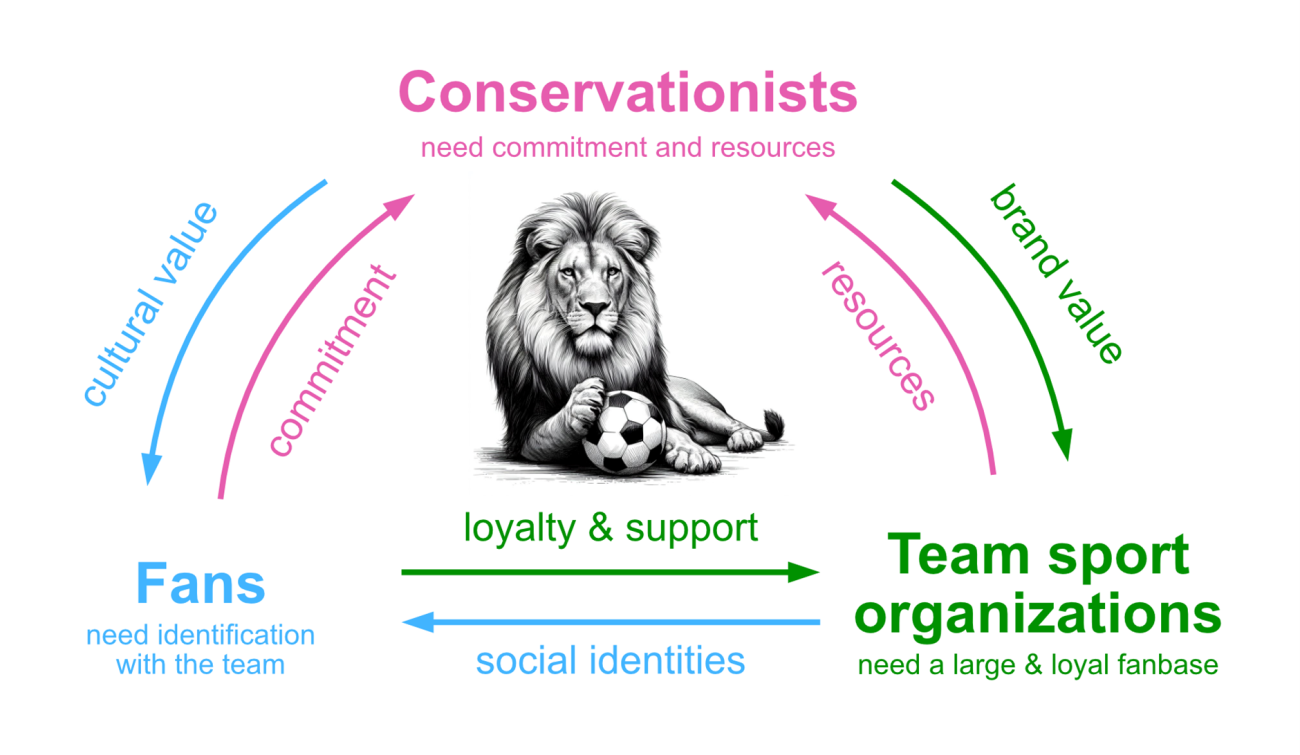Could your favourite sports team help save the planet’s most iconic wildlife? A new study involving Dr Diogo Veríssimo, a researcher at the Environmental Change Institute, suggests just that.
In a compelling piece of interdisciplinary research, Dr Veríssimo and colleagues argue that professional sports organisations—some of the world’s most recognisable and influential brands—have untapped potential to drive biodiversity conservation. Their paper, published in Frontiers in Ecology and the Environment, sets out how sports teams, their fans, and conservationists could join forces to protect the wildlife that often features in team names, logos, and mascots.

Animals in sport: more than just mascots
From lions and eagles to sharks and tigers, animal symbols are central to the identity of countless professional teams. But many of these real-life species are under threat. Dr Veríssimo said: "We found that numerous emblematic animals used in team branding—such as the lion, which is the most common symbol across major team sports—are facing extinction in the wild.”
For conservationists, this presents a unique opportunity: to connect with sports organisations and their massive global audiences by linking team identity to real-world conservation efforts. Dr Veríssimo added:
Sport creates incredibly strong emotional bonds. If those bonds can be extended to the actual animals behind the logos, we could see a groundswell of support for biodiversity.”
A win-win-win strategy
The paper introduces a "tripartite framework" that highlights how three groups—sports teams, fans, and conservationists—could all benefit from working together. Fans enjoy a deeper connection to their team, conservationists gain vital awareness and funding, and clubs enhance their brand value by aligning with environmental responsibility.
Dr Veríssimo said:
Sports teams already engage in corporate social responsibility. Adding biodiversity to that agenda—especially when their brand is built around a species—makes both ethical and business sense."

From roaring mascots to real-world impact
Many clubs already showcase their animal symbols proudly. Some even feature live animals at games, like the golden eagle flown before Eintracht Frankfurt matches. The research suggests that by engaging with conservation experts, teams can ensure these powerful symbols are more than just branding—they can become ambassadors for endangered species.
Dr Veríssimo and his co-authors also propose innovative funding ideas: a small percentage of ticket sales or merchandise profits could go toward conservation efforts, especially for species featured in team branding.
It's about giving back to the animals that clubs have built so much of their identity around.”
Looking ahead
The research calls for new partnerships between the worlds of sport and conservation, with an emphasis on co-designing meaningful, long-term biodiversity projects. Dr Veríssimo stresses the importance of avoiding superficial ‘greenwashing’ and ensuring efforts lead to tangible impact for nature. He said:
This is an exciting intersection of culture, commerce, and conservation. Sport reaches billions of people. If even a fraction of that influence can be harnessed to protect biodiversity, the benefits could be enormous.”
As the global biodiversity crisis worsens, this new vision for sport offers a surprising source of hope—and a powerful reminder that the fight to protect nature may be closer to home (or the stadium) than we think.
Read the full paper in Frontiers in Ecology and the Environment: Professional sport organisations as potential champions of biodiversity conservation

